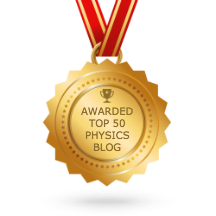 |
| The Study of Elementary Particles by the Photographic Method. |
The book is fascinating. It was published in 1959, the year before I was born. All three coauthors are British, and are famous enough to have Wikipedia pages. Cecil Frank Powell was a particle physicist who received the Nobel Prize in 1950 for developing the photographic method for studying nuclear processes, and for using this method to discover the pion. He was trained at the Cavendish Laboratory working with Rutherford. He died in 1969. Peter Howard Fowler was a student of Powell’s who worked on cosmic radiation. He was a radar officer with the Royal Air Force during World War II, and was able to detect German radar jamming and identify its source, leading to a destruction of the responsible German radar station. He was married to physicist Rosemary Fowler, who discovered the kaon. His grandfather was Ernest Rutherford. Fowler died in 1996. Donald Hill Perkins discovered the negative pion. He studied proton decay, and found early evidence of neutrino oscillations. Perkins and Fowler were the first to suggest using pion beams as therapy for cancer in 1961 (The use of pions in medicine hasn't panned out). Perkins died at the ripe old age of 97 in 2022.
When skimming through the book, I noticed an interesting illustration of a trident track produced by high energy electrons. It looks something like this:
A trident arises from the process of bremsstrahlung followed by pair production; both of which are described in IPMB. A fast electron interacts with an atomic nucleus, decelerating the electron and emitting a bremsstrahlung photon. This photon, if it has high enough energy, can then interact with an atomic nucleus to create an electron-positron pair. The intermediate photon can be “virtual,” existing only fleetingly. The end result is three particles: the original electron plus the pair. I gather that this requires a very high energy electron, and its cross-section is small, so it seems to contribute little to the dose in medical physics. The authors talk about the production of tridents for energies of more than a BeV, which is an old-fashioned way of saying a GeV, equivalent to 1000 MeV.
I’m glad Russ and I included figures from The Study of Elementary Particles by the Photographic Method. I hope I can figure out the permissions situation (the authors are all dead, and the publisher was sold to another company) and we can continue to include the figures in the 6th edition.




Very Well Written...Really Apprieciated
ReplyDeleteFood and beverage jobs in Jeddah
Kitchen staff jobs Jeddah
Room service jobs Jeddah
Waiter jobs Jeddah
Housekeeping jobs Jeddah
Cleaning jobs Jeddah